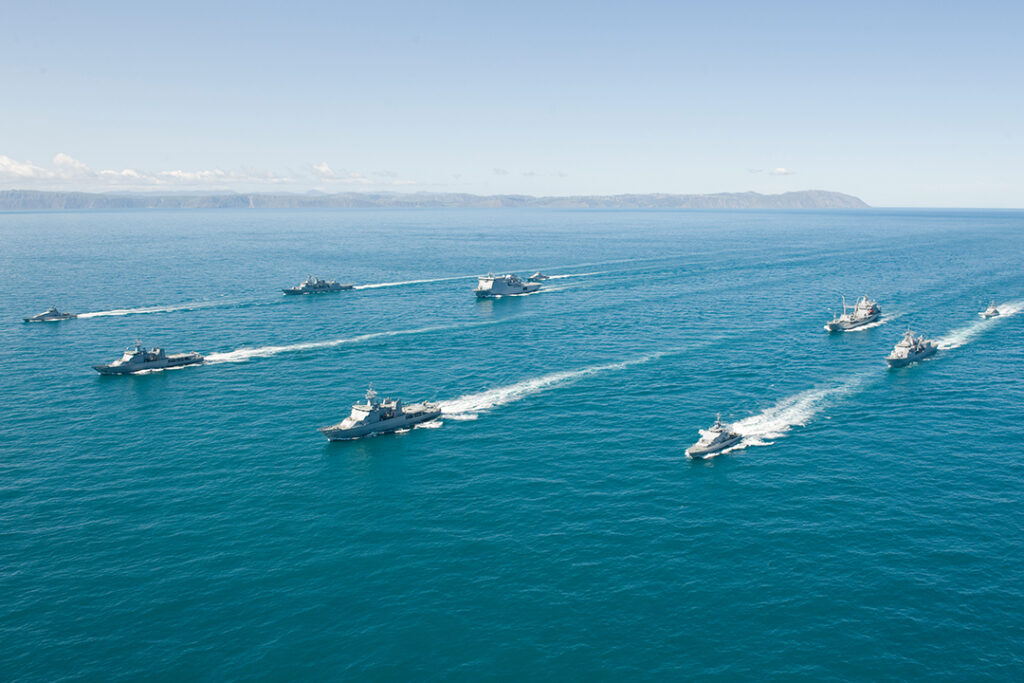The Crisis in the Red Sea
Koo Giyeon(SNUAC)
Amidst the ongoing Israeli-Palestinian conflict, the Red Sea region has emerged as a new flashpoint of crisis. The Red Sea is a maritime chokepoint situated between the African continent and the Arabian Peninsula, connecting the Mediterranean Sea via the Suez Canal to the Indian Ocean. It handles 30% of global maritime container traffic and 12% of world trade in goods. In the wake of the Russia-Ukraine war, traffic through the Red Sea has surged further, with Russian oil exports increasing more than 14-fold compared to pre-war levels.
Since November 2023, the Houthi rebels in Yemen have threatened and attacked Israeli and Western vessels, starting with the seizure of a British-owned cargo ship. By late February 2024, they had struck around 50 merchant ships and a few naval vessels operating in the area. The Houthis are a Zaidi Shia armed movement based in northern Yemen that gained power by resisting government forces during the Yemeni Civil War.
After the 2011 Arab Spring and the ousting of President Saleh, the Houthis captured the capital Sanaa and expanded their influence. Subsequently, as a Saudi-led coalition supported the Yemeni government and Iran backed the Houthis, the civil war took on the appearance of a Saudi-Iranian proxy conflict. During the 2023 Israel-Hamas war, the “Axis of Resistance” Shia forces like Hezbollah in Lebanon and the Houthis became overtly hostile toward Israel, reportedly receiving military and financial aid from Iran.
This Red Sea crisis is having global repercussions. Firstly, the blockade is disrupting worldwide logistics and supply chains. Shipping companies have had to reroute voyages, driving up freight costs and exacerbating inflation from logistical gridlock. Secondly, major undersea internet cables laid across the Red Sea bed are at risk. According to The Wall Street Journal, these fiber-optic cables carry around 17% of global internet traffic. Recent Houthi strikes damaged cables off Yemen’s coast, severing Djibouti’s internet access for two days. Repairing such cables is perilous and requires specialized ships, worrying the telecommunications industry. Thirdly, the sinking of the British cargo vessel Rubiamahro after a Houthi attack Februry 2024 has sparked fears of an environmental disaster, as the chemical fertilizer it was carrying could cause severe marine pollution.
위기의 홍해
구기연(아시아연구소)
이스라엘-팔레스타인 분쟁이 지속되는 가운데, 홍해 지역이 새로운 위기의 격전지로 부상하고 있다. 홍해는 아프리카 대륙과 아라비아반도 사이에 위치한 해로로, 지중해와 수에즈 운하, 인도양을 연결하는 해상 통로의 요충지이다. 전 세계 해상 컨테이너 물동량의 30%, 상품 교역량의 12%가 이 지역을 통과한다. 러시아-우크라이나 전쟁 이후 홍해 지역의 물동량은 더욱 증가하였고, 러시아 원유 교역량 또한 전쟁 이전보다 14배 이상 늘어났다.
예멘 후티 반군은 2023년 11월 영국 소유 화물선을 나포한 것을 시작으로 이스라엘 및 서방 선박에 대한 위협을 가하고 있으며, 2024년 2월 말까지 약 50척의 상선과 소수의 군함을 공격해 왔다. 후티 반군은 예멘 북부 지역에 거주하는 자이디파 시아파 무장세력으로, 예멘 내전 과정에서 정부군에 저항하며 세력을 확장해왔다.
2011년 아랍의 봄 이후 예멘 살레 대통령이 물러나자 후티 반군이 수도 사나를 점령하며 영향력을 넓혔다. 이후 사우디아라비아 주축 연합군이 예멘 정부를 지원하고 이란이 후티 반군을 지원하면서 예멘 내전은 사우디-이란 대리전 양상을 보였다. 2023년 이스라엘-하마스 전쟁 발발 시 ‘저항의 축’으로 불리는 시아파 세력인 레바논 헤즈볼라, 예멘 후티 반군 등이 이스라엘에 적대적으로 나서기 시작했다.
이러한 홍해 위기 상황은 전 지구적인 문제를 낳고 있다. 첫째, 홍해 항로 봉쇄로 인해 세계 물류 유통에 차질이 빚어지고 있다. 각국 선박회사들이 운송 경로를 변경해야 하면서 물류비 상승과 더불어 물류 대란으로 인한 인플레이션 압력도 가중되고 있다. 둘째, 홍해 해저에 설치된 주요 광케이블의 안전이 위협받고 있다. 미국 월스트리트저널에 따르면 홍해 해저에는 전 세계 인터넷 트래픽의 약 17%를 전달하는 광섬유 케이블이 부설되어 있는데, 최근 후티 반군의 공격으로 예멘 해안 인근 케이블이 파손되어 지부티의 인터넷 접속이 2일간 중단되기도 했다. 케이블 수리 작업 역시 위험하고 전문 인력과 장비가 필요해 국제 통신업계가 긴장하고 있습니다. 셋째, 영국 화물선 루비마흐로호가 후티 반군의 공격을 받고 침몰하면서 환경재앙 우려가 현실화되었다. 2024년 2월 화학 비료를 싣고 있던 이 선박이 공격 1주일 만에 가라앉으면서 대규모 해양오염 사태가 발생할 가능성이 높아졌다.

